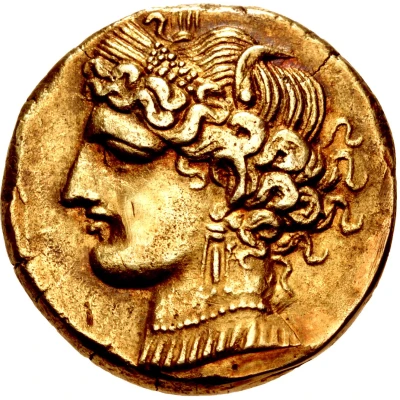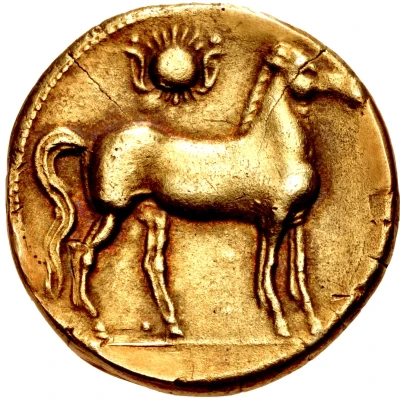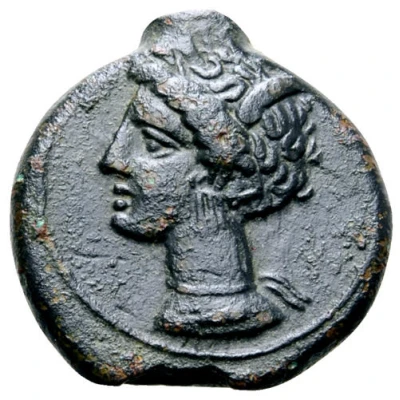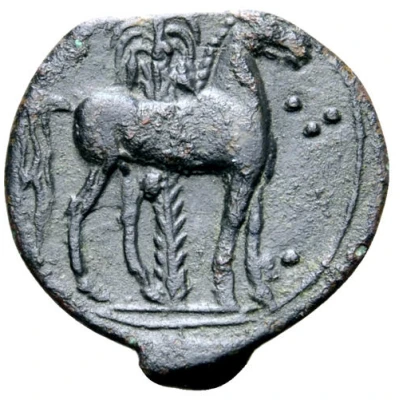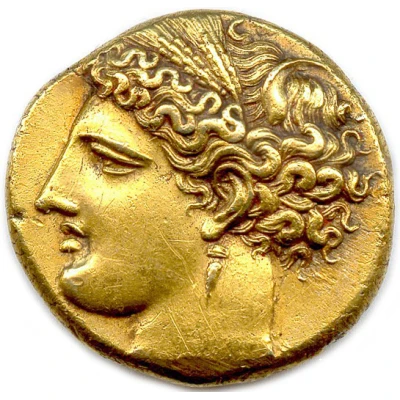
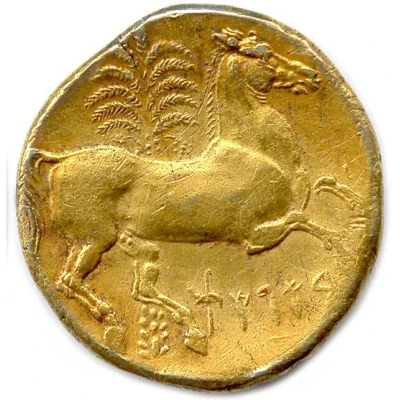

© Phidias and Jean Vinchon
Tristater 270 BC - 260 BC
| Electrum | 21.69 g | - |
| Issuer | Carthage (Zeugitana) |
|---|---|
| Type | Standard circulation coin |
| Years | 270 BC - 260 BC |
| Value | Gold Tristater (36) |
| Currency | Shekel |
| Composition | Electrum |
| Weight | 21.69 g |
| Shape | Round (irregular) |
| Technique | Hammered |
| Demonetized | Yes |
| Updated | 2024-10-09 |
| Numista | N#190022 |
|---|---|
| Rarity index | 97% |
Reverse
Wild horse galloping right. Date palm tree behind.
Script: Phoenician
Translation: City of Carthage.
Comment
According to SNG-B Lock# 1063, the coin was minted during the last quarter of the 4th century BC.Recorded Sales:
• Phidias Auction June 1992, Lot #59. Sold for € 100,000 in TB grade.
Interesting fact
The Tristater coin was used as a form of currency in the ancient city of Carthage, which was located in present-day Tunisia. The coin's name "Tristater" comes from the Latin word "tristatus," meaning "three-fold," which refers to the coin's unique design featuring three human heads on one side and a horse's head on the other. This design was meant to symbolize the three continents that Carthage traded with: Africa, Europe, and Asia. The use of Electrum, a naturally occurring alloy of gold and silver, in the coin's minting process further highlights the advanced metallurgical skills of the ancient Carthaginians.
